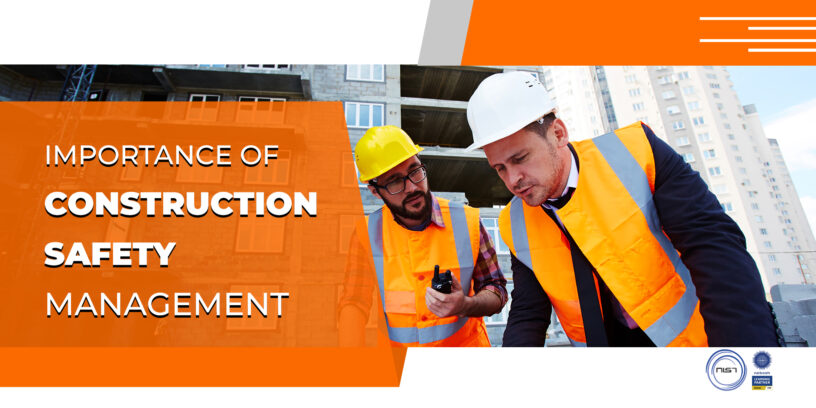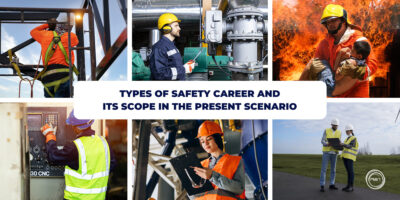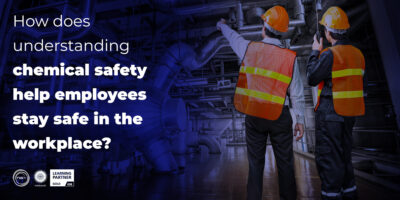In today’s world, construction projects face numerous safety challenges. Any project, whether it’s a commercial construction site, a public infrastructure project, or a residential construction, should always prioritise safety.
Construction workers have a higher fatality rate than other workers in the business. According to OSHA, construction industry accounted for almost 20% (1,061) of worker fatalities in private industry in calendar year 2019, accounting for one out of every five worker deaths. In 2017, 381 out of 971 deaths in construction were attributed to “falls,” accounting for 39.2 percent of all deaths. In 2017, 80 out of 971 deaths, or 8.2 percent of all deaths, occurred as a result of construction workers being struck by an object.
Employee safety is a shared responsibility:
For all construction employees, safety should always take precedence. While on the job site or at work, it’s vital to follow all safety laws and regulations, as well as any additional precautions that may be relevant to the job. Every employee who works on a working construction site is responsible for receiving safety training. As construction sites are indeed dangerous places, it’s vital to stay safe at all times. This article highlights some of the most common construction site hazards as well as how to prevent them.
Why a Safety person is important in the construction field?
Workers’ and the general public’s safety is just as vital as the quality of the work. Every day, construction workers are at danger of injury. While workers’ compensation programmes do an outstanding job of delivering payments to injured workers, they are unable to safeguard them from injuries, therefore appointing safety professionals would aid in building a safe atmosphere for them. Construction sites must have a sufficient number of safety workers on site as part of this process, as their proper abilities will ensure that employees do duties safely and efficiently.
Safety professionals operate in a wide range of industries, including construction, healthcare, manufacturing, and information technology, and others, as they prepare, implement, and maintain safe working conditions to keep people safe from accidents, injuries, and illnesses. They achieve this by recommending job safety analysis tools, conducting workplace inspections, providing training on safe work processes, equipment, and technology, addressing unsafe workplace behaviours, and conducting audits to assess the effectiveness of policies and procedures, etc.
Also, the safety professional’s responsibility is critical in ensuring that the proper precautions are taken and that all stakeholders follow them. A safety specialist will also be involved in monitoring procedure compliance, identifying potential hazards, risks, and other difficulties, and finding solutions to them.
Duties of a Safety professional in construction Safety:
- As a safety specialist, he or she would conduct extensive research on worksite issues and identify potential hazards.
- A safety specialist would seek for ways to a. keep personnel safe from workplace accidents, b. prevent fires and explosions, and c. find the best ways to avoid falls and injuries when working at heights.
- A safety expert will ensure that your building site is safe for you and your coworkers in general
- Would continuously monitor and update risk assessment documents and verify issues are solved; track, update and solve if there are any new risks identified in the workplace
Why construction safety training is important?
Safety training is the responsibility of every person who works in an operating construction site. First and foremost, it’s important to save lives and prevent injuries, harm etc. from workplace. Furthermore, a safety training and compliance are critical to any company’s success and survival. Construction worker safety training and education has been shown to reduce injury rates. These kind of initiatives have been demonstrated to minimise injuries by nearly 50 per cent. Training is the best way to get all workers on the same page. This will help employees understand their roles, responsibilities and what they can do to keep themselves safe.
An effective safety program can be instrumental in reducing accidents and injuries. In fact, according to OSHA (Occupational Safety and Health Administration), companies that do not perform regular safety training programs have a fatality rate that is five times higher than those with regular safety programs.
Benefits of construction safety training:
- Workers who have undergone safety training are also more productive and enjoy their jobs.
- Trained employees will take fewer breaks, work longer hours, and have a higher turnover rate than their untrained counterparts.
- Having a trained workforce also has a positive impact on business management and customer satisfaction.
- Safety training participants will learn about legal obligations in the workplace, identify workplace hazards, practise safety precautions when working with different hazards, recognise and respond to all industrial warning indicators.
- Participants will also be familiar with work at height steps, safety in excavations, trenching, scaffolding safety, electrical safety, material handling safety, welding and gas cutting safety, construction safety managements etc. as a result of this training.
This course is recommendable to undertake as it ensures that you have the essential skills, information, and training to execute your work effectively at construction site.
With all of this in mind, how can businesses get started with workplace safety? There are several ways to introduce safe practises into your organisation and ensure that employees receive regular training: 1) Instill in your employees the importance of safety. 2) Safety training should be given regularly and on a consistent basis in order to create an awareness of the importance of safety procedures in the workplace.
What we do at NIST:
NIST is an ISO: 9001-certified company and India’s first NEBOSH Gold Learning Partner engaged in offering quality training programmes for individuals and organisations in various fields like IT/ITES, Construction, manufacturing, Health Care and many more. The Construction Safety Course is designed for employees who want to learn about their rights and responsibilities in pertaining to work-related health and safety issues, as well as how to protect themselves and others from occupational hazards while working on-site as well as protect the environment and those around them, by providing an overview of the requirements applicable to them and their workplaces through online classes.
The training sessions will be conducted in accordance with international standards using audiovisual presentations and case studies. You will also learn about the importance of observing safety signs and safe work procedures, site management, and site control systems to ensure safety on any job site or worksite during the training.
At NIST, we are offering a variety of courses with different levels of certification on different topics related to workplace safety programs including Industrial safety, Construction Safety, Hazardous Waste Management Training, Environmental management much more. Our mission is to improve the quality of life by making sure that people are trained and prepared to handle any crisis situations such as accidents or disasters, and that they are aware of the laws and regulations concerning emergency management and disaster response, and are able to implement these in case of emergencies in the future in order to save lives, reduce suffering, protect property, protect the environment, and mitigate risks and disasters in workplace.
For further details, contact our client servicing team @ +91 9384663536 or mail us at corporate.sales@nistinstitute.com













Leave a Reply